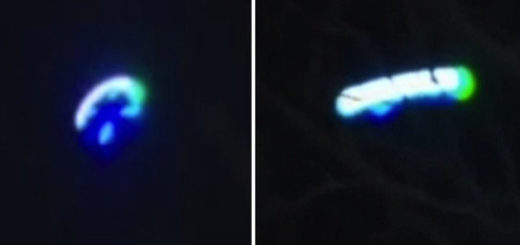Air Force’s mysterious X-37B space plane wings by 600 days in orbit

An Air Force X-37B robotic space plane is shown after it landed at Vandenberg Air Force Base in California. The fourth mission of the program is now underway and just passed 600 days in Earth orbit. (USAF/Boeing)
The U.S. Air Force’s mysterious X-37B space plane has now spent 600 days in Earth orbit on the vessel’s latest mission, and is nearing a program record for longest time spent in space.
The robotic X-37B lifted off atop a United Launch Alliance Atlas V rocket from Florida’s Cape Canaveral Air Force Station on May 20, 2015, kicking off the program’s fourth space mission (which is known as Orbital Test Vehicle-4, or OTV-4).
If the uncrewed spacecraft spends 74 more days aloft, it will break the duration record set during OTV-3, which touched down in October 2014. [The X-37B’s Fourth Mystery Mission in Photos]
But it’s unclear how long OTV-4 will last, or just what the X-37B is doing as it circles Earth; most details about the space plane’s missions and payloads are classified.
Milestone record keeping
The first OTV mission began on April 22, 2010, and concluded on Dec. 3 of that year, following 224 days of orbit. OTV-2 lifted off on March 5, 2011, and landed on June 16, 2012, after 468 days in orbit.
The record-setting OTV-3 mission chalked up nearly 675 days in orbit, circling Earth from Dec. 11, 2012, until Oct. 17, 2014.
All three previous OTV missions have come down to Earth at Vandenberg Air Force Base in California, but that may change for OTV-4’s landing, whenever it occurs.
Heading for Florida?
Progress has been made on consolidating X-37B space plane operations, including the use of NASA’s Kennedy Space Center (KSC) in Florida as a landing site for the robotic space plane.
A former KSC space-shuttle facility known as Orbiter Processing Facility-1 (OPF-1) was converted into a structure that will enable the Air Force “to efficiently land, recover, refurbish and relaunch the X-37B Orbital Test Vehicle (OTV),” according to representatives of the aerospace giant Boeing.
X-37B vehicle development falls under the control of Boeing Space and Intelligence Systems in El Segundo, California, which is Boeing’s center for all space and experimental systems and government and commercial satellites.
The Air Force Rapid Capabilities Office is leading the Department of Defense’s OTV initiative, by direction of the under secretary of defense for acquisition, technology and logistics and the secretary of the Air Force.
Fleet size
To date, only two reusable X-37B vehicles have been confirmed as constituting the space plane fleet. The current OTV-4 mission is the second flight of the second X-37B vehicle built for the Air Force by Boeing.
The military space plane looks like a miniature version of NASA’s retired space shuttle orbiter . The X-37B is just 29 feet long and 9.6 feet tall, and has a wingspan of nearly 15 feet. For comparison, the space shuttles were each 122 feet long, with wingspans of 78 feet.
The X-37B has a payload bay about the size of a pickup truck bed that can be outfitted with a robotic arm. It has a launch weight of 11,000 lbs and is powered in orbit by gallium arsenide solar cells with lithium-ion batteries.
Payloads aboard
Some payloads aboard the OTV-4 craft have been previously identified.
For example, Aerojet Rocketdyne has said that its XR-5A Hall Thruster had completed initial in-orbit validation testing aboard the X-37B space plane. Also on board is a NASA advanced-materials investigation.
Such test-bedding of equipment is one of the main purposes of OTV missions, along with the development of reusable-spacecraft technologies, Air Force officials have said.
“It remains a very useful way to test out things,” Winston Beauchamp, deputy undersecretary of the Air Force for space, told Space.com last September during an American Institute of Aeronautics and Astronautics (AIAA) meeting in Long Beach, California.
When asked about adding more X-37Bs to the nation’s fleet, Beauchamp said that the current number of vehicles meets the Air Force’s needs.



 Creators of mankind
Creators of mankind Description of “Tall white aliens”
Description of “Tall white aliens” Where they came from?
Where they came from? About hostile civilizations
About hostile civilizations The war for the Earth
The war for the Earth “Tall white aliens” about eternal life
“Tall white aliens” about eternal life Video: “Nordic aliens”
Video: “Nordic aliens” Aliens
Aliens Alien encounters
Alien encounters The aliens base
The aliens base UFO
UFO Technology UFO
Technology UFO Underground civilization
Underground civilization Ancient alien artifacts
Ancient alien artifacts Military and UFO
Military and UFO Mysteries and hypotheses
Mysteries and hypotheses Scientific facts
Scientific facts


















